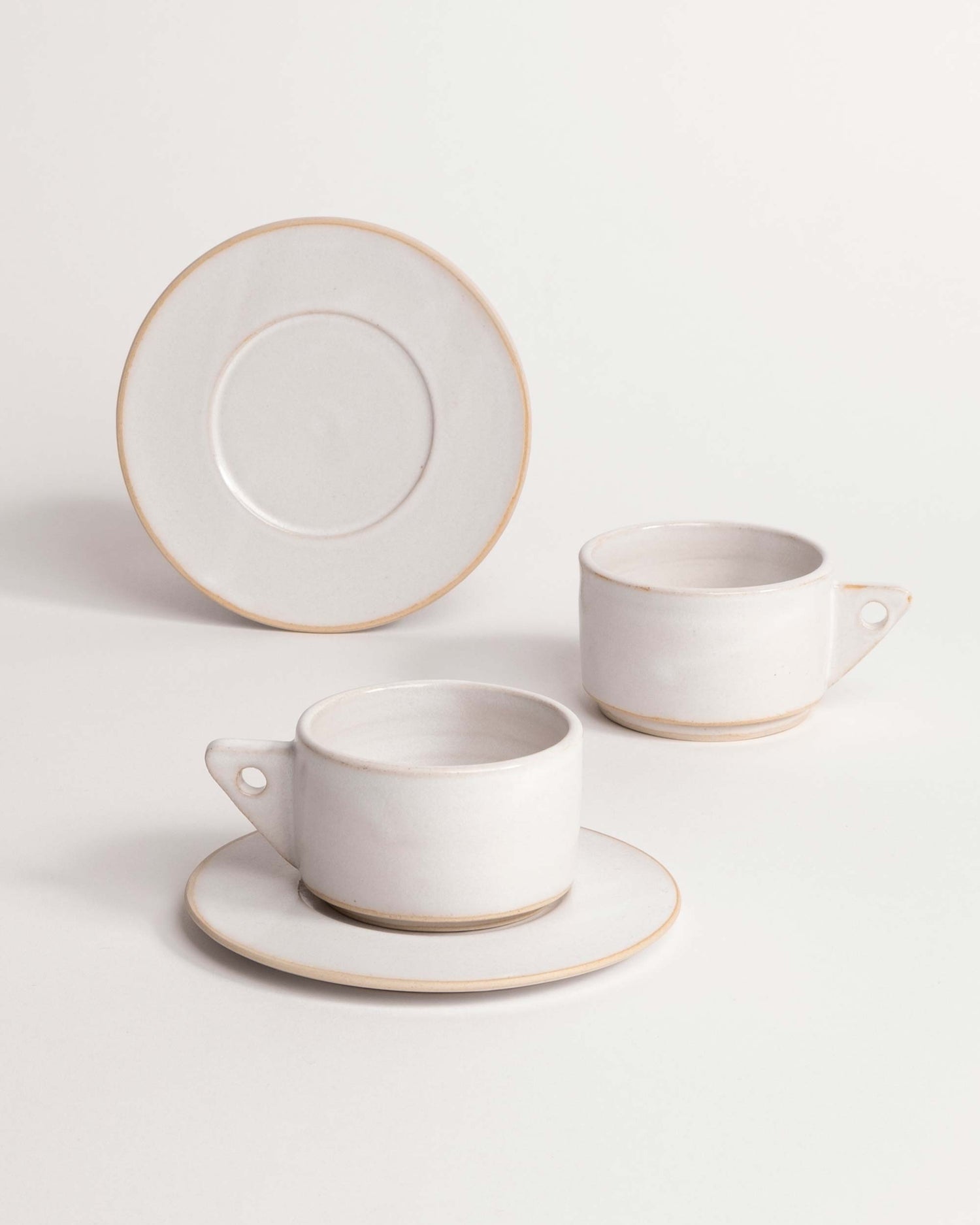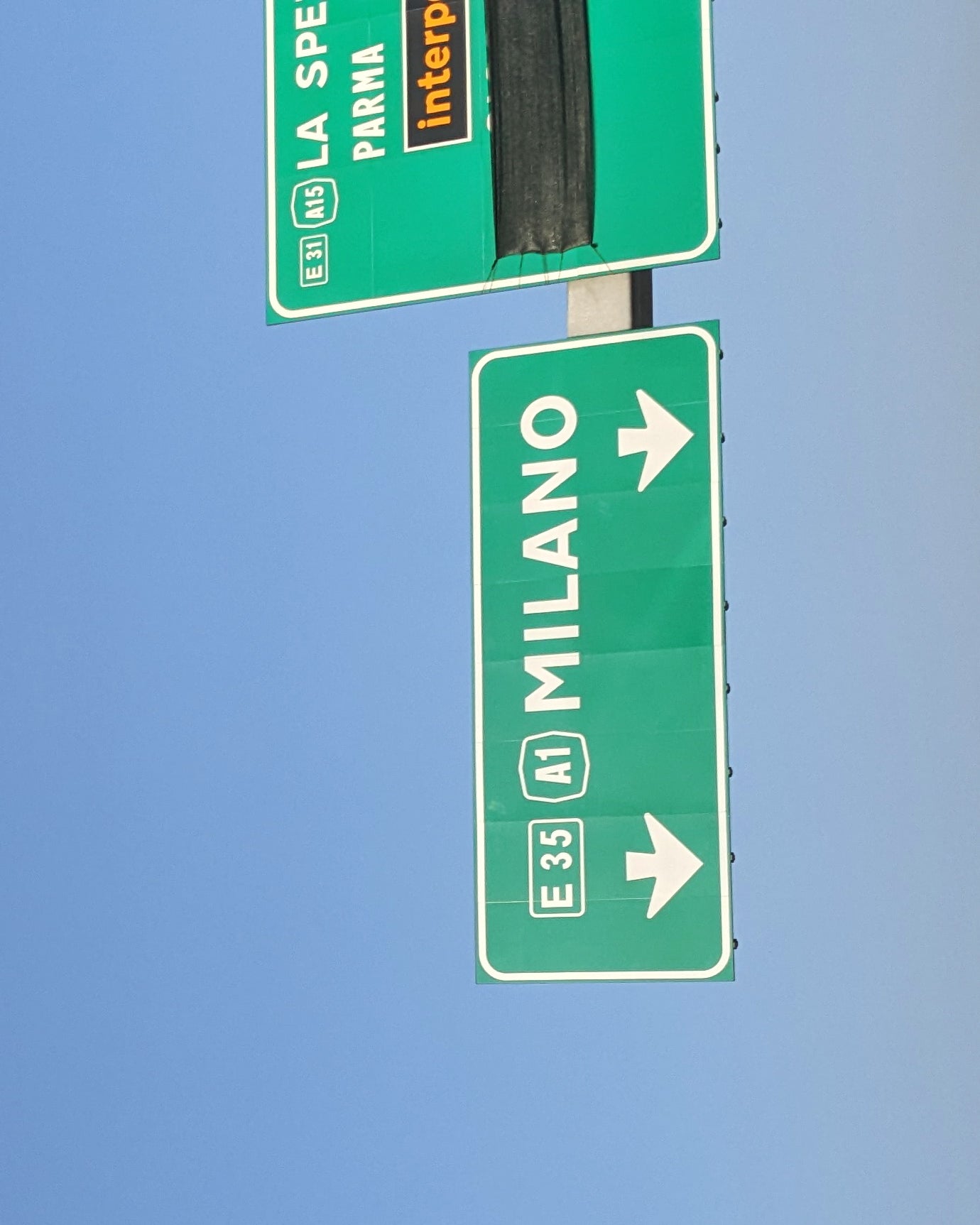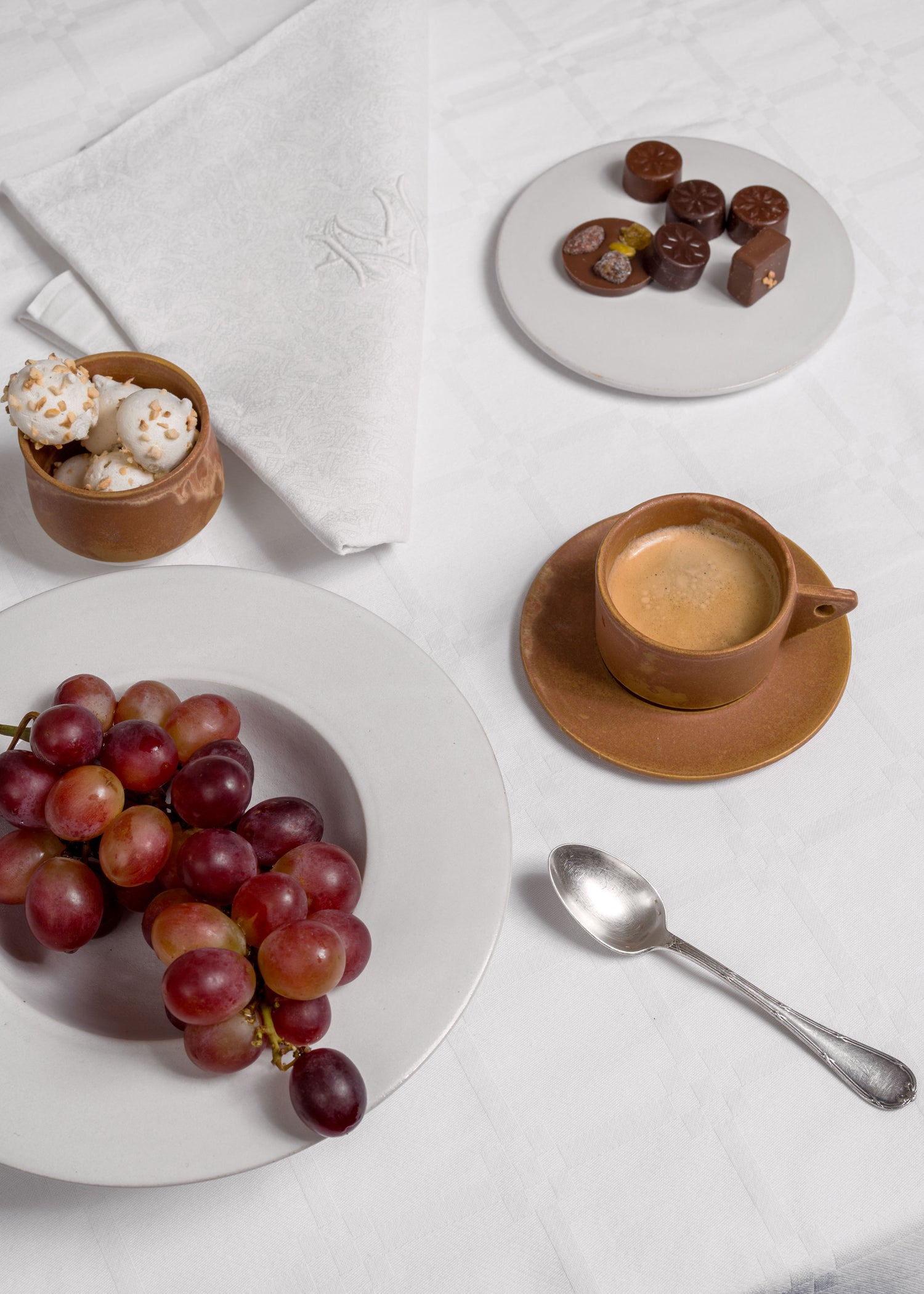
THE MILANO COFFEE CUP
Our in-house design studio creates all the collections at Mestiers
The Milano coffee cup is our best-seller across all categories. In this article, we take you through the creation process behind the Milano cup and introduce you to the work of our design studio.
HOW WAS THE MILANO CUP BORN?
The Milano coffee cup is the fruit of a shared vision, shaped by three of us: Louis, our ceramicist, and me. We wanted to design a medium-sized cup with a handle and saucer—perfect for long coffees and macchiatos.

Sketching and Mockups
The first step is to define the ideal volume, which determines the diameter and height of the cup.
It all starts with a sheet of paper, a pencil, and a compass.
This stage takes time—when it comes to small objects, even a few millimeters make a difference. Minimalist pieces leave no room to hide — every proportion, every detail of the craftsmanship matters.
Once the cup’s dimensions are set, we move on to the saucer; since the Milano saucer is round, it’s a relatively straightforward process.
Next comes the mockup stage, where we test the real-life dimensions using paper and cardboard prototypes.
At this point, the Milano cup still doesn’t have a handle.

Designing the Handle
It was then Louis’s turn to take the lead. Designing a handle is no easy feat. On a round coffee cup with a matching round saucer, it’s the handle that brings personality to the piece. It needs to have character, yes—but also function. That means offering a comfortable grip that works across different hand sizes.
If you know us a little, you know how much we love Italian design—we talk more about that [here]. For this project, we were after something with clean, bold lines. A design that looks simple at first glance, yet makes a lasting impression. Ambitious, we know.
To get there, we had to go back to the basics of geometry: the circle and the square. We experimented, then stepped back. Letting the sketch rest is often part of the process. On our second try, we explored a tubular handle. It didn’t match the vision we wanted for this piece. So we paused again. What do you do when you let a sketch rest? You live. You read, work, listen to music, go to the movies, study, get inspired, have dinner with friends. All these moments (and the emotions they spark) feed the creative process. And then one day—maybe while doing the dishes, or after a workout—it clicks. The idea reemerges.
Back at the drawing board, a flat, triangular handle appeared under Louis’ pencil. He added a mid-sized hole to create friction for a better grip.
We finalized the mockup with the new handle, adjusted the angles and measurements, and transferred everything to a technical drawing in our design software—converting each dimension to account for clay shrinkage during the two kiln firings.
Even with a precise technical drawing, the artisan’s interpretation marks the beginning of a dialogue — between maker and object.
It’s about staying true to the designer’s vision, while inevitably bringing in one’s own hand and sensibility. Otherwise, what would be the point of making things by hand in the first place?
Over ten years ago, early in our journey, I spoke with a craftsman who specialized in the final trimming of hand-knotted rugs.
As he was carefully shearing a large carpet, he said something that may sound strange — but is deeply meaningful to anyone who shapes objects with their hands.
“The client may want a 1 cm pile height, but it’s the rug that decides. I listen to the rug. It’ll be 1.2 cm, or maybe 0.8 cm — we’ll see.”
At Mestiers, we say this often — here and here, for example — handmade objects are not inert.
They radiate, and they speak of the ongoing conversation between hand and material.
For the Milano coffee cup, the ultra-flat line of the saucer is attributed to the ceramicist. While we had meticulously outlined the saucer’s dimensions, with no intention of making it too curved like some saucers can be, the final shape owes itself to the artisan’s deep understanding of the design, which allowed the saucer’s line to flow seamlessly with that of the cup.
A designer’s vision is understood by the artisans he works with over time, through numerous projects, both the prototypes that were chosen and those still in progress, as well as through moments of collaboration and shared experiences in the workshop. Listening, trust, and the freedom to step back are all essential elements that fuel a successful creative partnership.
Now, our biscuit is ready, and we’re pleased with it! The final step is to choose the glaze that will dress our coffee cup. Not every color or texture suits every form; for us, it’s about finding the “coat” that balances best with the design. The stucco white, with its “washed” look and subtle browning at the edges during firing, quickly became the obvious choice. We then experimented with other glazes, all crafted in-house by the workshop itself. That opened up a whole new realm of possibilities that we continue to explore in the workshop.
The Milano coffee cup was born!

Our approach requires time. Creation takes time. Handcrafting takes time. That’s why we can’t frequently offer new items or align ourselves with the prices of large-scale or fully industrial production retailers.
Your support for our work shows how much you appreciate these values, and we thank you for that. We also want to thank you for the warm reception you’ve given to the Milano cup.
If you enjoyed this article, we invite you to join us for the next one, which will detail the entire process of creating ceramics by hand — a true deep dive into the potter’s craft.
